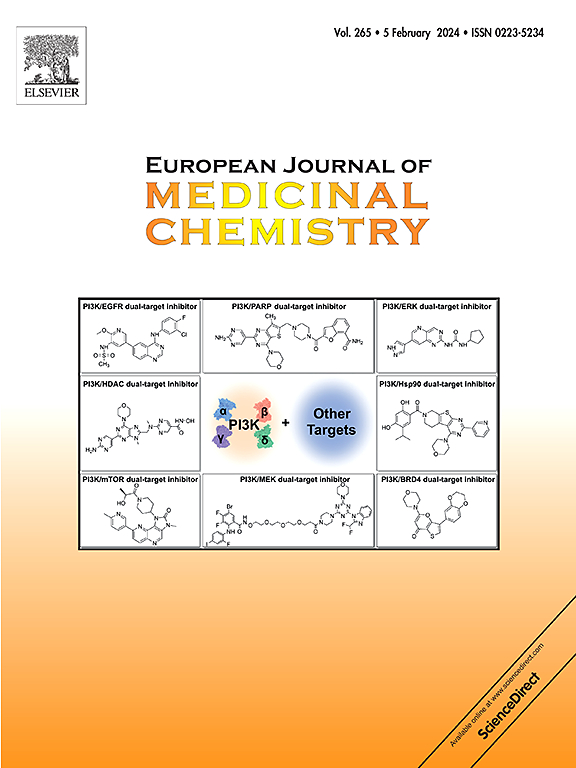Design, synthesis and biological evaluation of 3-amino-6-(2-hydroxyphenyl)pyridazin-4-aryl derivatives as SMARCA2/4 degraders
IF 6
2区 医学
Q1 CHEMISTRY, MEDICINAL
引用次数: 0
Abstract
SMARCA2/4, a pair of mutually exclusive core catalytic subunits of the chromatin remodeling complex SWI/SNF, play essential roles in regulating gene transcription. Given the pivotal role of SMARCA2/4 in sustaining the oncogenic transcription program and promoting proliferation in acute myeloid leukemia (AML), the development of non-selective degraders holds practical therapeutic implications. Herein, we designed and synthesized a series of proteolysis-targeting chimeras (PROTACs) by conjugating the VHL ligand to a SMARCA2/4 bromodomain ligand, 2-(6-amino-5-phenylpyridazin-3-yl)phenol, using various linkers. Preliminary evaluations identified A11 as the most potent molecule that efficiently degraded SMRACA2 (DC50 = 3.0 nM, Dmax = 98 %) and SMARCA4 (DC50 = 4.0 nM, Dmax = 98 %). A11 significantly inhibited the proliferation of hematological cancer cell lines, including MV-4-11, MOLM-13 and SU-DHL-4. It decreased the levels of SMARCA2/4 through the ubiquitin-proteasome system. Global proteome analysis revealed that A11 was able to selectively target and degrade SMARCA2/4. Additionally, A11 caused cell cycle arrest at the G0/G1 phase and induced cell apoptosis in MV-4-11 and MOLM-13 cells. It also blocked the oncogenic activity of MYC and other disease-related genes in AML cells. Overall, our data clarified that A11 is a promising SMARCA2/4 degrader for cancer therapy, which is worthy of further evaluation.


求助全文
约1分钟内获得全文
求助全文
来源期刊
CiteScore
11.70
自引率
9.00%
发文量
863
审稿时长
29 days
期刊介绍:
The European Journal of Medicinal Chemistry is a global journal that publishes studies on all aspects of medicinal chemistry. It provides a medium for publication of original papers and also welcomes critical review papers.
A typical paper would report on the organic synthesis, characterization and pharmacological evaluation of compounds. Other topics of interest are drug design, QSAR, molecular modeling, drug-receptor interactions, molecular aspects of drug metabolism, prodrug synthesis and drug targeting. The journal expects manuscripts to present the rational for a study, provide insight into the design of compounds or understanding of mechanism, or clarify the targets.

 求助内容:
求助内容: 应助结果提醒方式:
应助结果提醒方式:


